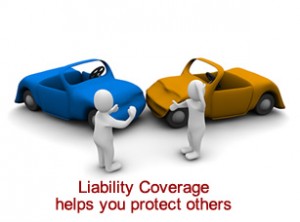 Do you know what your auto insurance coverage is? Do you know how much your limits are? If you do, you’re the exception. When I speak to groups and ask this question, usually less than 10 percent of the people raise their hands. The first step in optimizing your insurance coverage is to know what you already have.
Do you know what your auto insurance coverage is? Do you know how much your limits are? If you do, you’re the exception. When I speak to groups and ask this question, usually less than 10 percent of the people raise their hands. The first step in optimizing your insurance coverage is to know what you already have.
Not all personal injury claims result from car accidents, but these accidents are by far the most common cause of injury claims. As a result, I spend a lot of time talking to people about auto accidents and auto insurance. Every state has some requirement for auto insurance. Because of this requirement, nearly everyone has some kind of insurance. However, I am continually surprised by how little people actually know about auto insurance. This blog series breaks down auto insurance into its most common components, explains what each coverage does, and advises you on the essential coverage you should make sure you have to protect yourself and your family.
The most common types of insurance coverage are liability, uninsured or underinsured coverage, and personal injury protection (PIP). In addition, you can usually purchase comprehensive coverage, rental car coverage, roadside assistance, and many other options.
Let’s take a look at each kind of coverage and see what it does and how it works:
LIABILITY COVERAGE
Liability is the only coverage required by law in the State of Washington. Currently the law requires every driver to carry a minimum of $25,000 per person and $50,000 per incident (25/50). Liability coverage protects you when you cause an accident by paying for the damages or injuries you cause, up to the amount of your limits.
Liability coverage does not completely shield you from personal liability. For example, if you have the minimum coverage and you cause someone to become paralyzed, that person can refuse to accept your insurance limits and sue you directly. As long as your insurance company offered to pay your limits, it is then likely off the hook for any judgment against you in excess of those limits. Because of this, it’s a good idea to carry more liability insurance than your net worth. People with very high net worth are often advised to carry an umbrella liability policy, which provides an additional layer of liability coverage above and beyond their auto coverage.
Unfortunately, most people don’t have very high limits of liability coverage, and in Washington, despite the law requiring insurance, nearly 20 percent of drivers have no insurance at all. When you are injured by another driver’s negligence, it is that driver’s liability coverage you will be seeking in your claim. In most cases, your recovery will be limited by the other driver’s policy limits because he simply doesn’t have any assets worth going after.
Here’s a real-life example:
Sam and Carla Bronson and their four-year-old daughter, Ellie, were driving home in their minivan. A drunk driver speeding down the freeway rear-ended the family vehicle, causing it to lose control and spin into another car with a driver and a passenger. All three of the Bronsons were hurt. Sam broke his arm, Carla suffered neck and back injuries and a mild traumatic brain injury, and Ellie suffered some scrapes and bruises. The occupants of the other car were also hurt, each having neck and back injuries. Unfortunately, the guy who caused the accident had minimum coverage of $25,000 per person and $50,000 per accident. This limits the claims in two important ways. First, no one claimant can recover more than $25,000. Carla’s medical bills alone were in excess of $25,000, but the policy limits protect the insurer from paying more than $25,000 per person. Second, the insurance company will not pay more than $50,000 total for the claims of all five injured people combined.
So what’s an injured person to do? In this example, the person who caused the collision had no assets. Without some other source of insurance, the recovery could be limited to the liability insurance limits. Fortunately, my clients had purchased uninsured/underinsured motorist coverage (UM/UIM) with their own auto insurance. We will address that coverage in the next installment of this blog series.
In summary, liability coverage protects your assets if you cause harm to someone else. It’s a good idea to carry liability coverage in an amount equal to or in excess of your net worth. If you have a high net worth, it might be worthwhile to look into an umbrella liability policy in addition to your auto coverage.
Watch for part 2 of this series, in which I will discuss Uninsured and Underinsured Motorist Coverage. And as always, if you have any questions about car insurance or any aspect of the personal injury claims process, please check out our website or give us a call.
